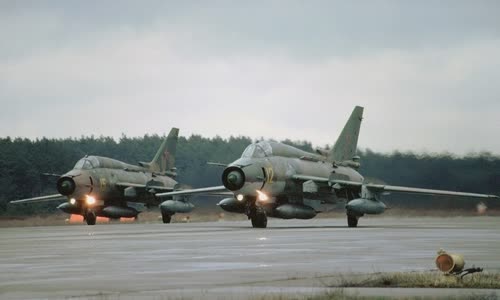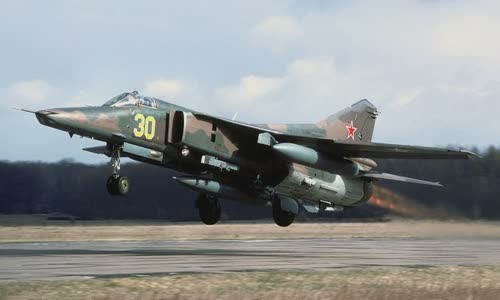NATO's Able Archer 83 drills alerted the Soviet Union, mounting nuclear weapons for nearly 100 fighter jets to strike back.
Nearly 100 Soviet front-deployed fighters in East Germany were equipped with nuclear bombs and were ready to be "used immediately" in the context of the alarming Moscow issued, preparing for a full-scale war with NATO in late 1983
The United States and NATO members conducted exercises, codenamed "Able Archer 83" on November 5-11, 1983, to test the communication channel between North America and Europe during the transition from conventional warfare.
Every contact in the process is encrypted, but the messages start with the phrase "rehearsal".
However, the tension between Moscow and Washington in 1983 made the Soviet Union concerned that the exercise was a cover for war action.
"In 1983, we may have unintentionally put our relationship with the Soviet Union in a hairline," said the US President's Foreign Intelligence Advisory Committee investigation report.
Signal intelligence data obtained during that period showed that Soviet military headquarters across Europe were on duty 24/7.
The spearhead of this force are air divisions equipped with MiG-27 and Su-17 bombers, as well as the Su-24 attack.
The fourth air force of the Soviet Union stationed in Poland also changed its alarm status by order of Soviet air force commander Pavel Kutakhov.

The Su-17M4 squadron brought extra oil tanks to return to Russia in 1994 Photo: Rob Schleiffert
Each Soviet bomber regiment then had a squadron dedicated to deploying nuclear weapons.
Newly declassified US documents show that the Soviet nuclear-carrying fighter jets were ready to sortie within 30 minutes of the request, the flight crew received the order "to destroy the items.
Not much is known about the types of bombs equipped with this force.
NATO intelligence confirmed that at least one Su-17M4 fighter belonging to the 730th Fighter Regiment at present-day's Neuruppin base in northern Germany was fitted with an electronic repressor cluster, indicating that the Soviet Union was prepared.
"This means that the aircraft in the squadron are equipped with an unprecedented weapon configuration, possibly a combat configuration," said US military intelligence in late 1983.
In addition to the tactical air force, 70 RSD-10 long-range ballistic missiles carrying nuclear warheads were also put into combat readiness by the Soviet Union.
Fortunately, the US military commanders at that time did not know the real Soviet response.

MiG-27 bombers departed from the Rechlin-Larz base, Germany, to Russia in 1993 Photo: Rob Schleiffert
Commander usafe Billy Minter asks Perroots to assess the situation in East Germany and get the answer that "does not have enough evidence to support the plan to enhance the real alarm state."
Perroots claimed to decide when she did not recommend escalating towards NATO, but admitted that he did not have a panorama of the Soviet war preparation.
The risk of war was only removed when the British army detected an unusually strong response from the Soviet Union and notified the US.
At this time, the US leaders realized they had not foreseen the possibility that Moscow would consider the exercise a cover for war, especially when NATO suffered a great disadvantage in manpower and weapons compared to the Soviet Union.
Moscow's reaction also completely surprised Washington, especially when they did not understand the reasons for the excessive Soviet actions before a normal exercise.
The Soviet Union only ended active combat when the Able Archer 83 exercise ended.



 Christy De Pasquale
Christy De Pasquale







